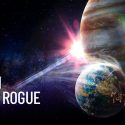Something strange is happening on the outskirts of our Solar System. It could be a large, mysterious planet. Or, it could be a black hole.
How big would this black hole be? What effect would it have on our Solar System? And what would happen to you if you got too close?
Far beyond Neptune, there are small, icy objects orbiting our Sun. These are trans-Neptunian objects or TNOs. And these TNOs have an oddly clustered orbit pattern. But this type of orbit doesn’t happen on its own. Something is making those objects orbit like that.
And whatever that something is, it would need to be at least 17 times more massive than the Earth and 10 times further from the Sun than Neptune is. Could it be the mysterious Planet Nine?
So far, there is no evidence to back up the theory of a massive ninth planet disrupting the orbits of these objects. But scientists have another possible explanation.
One that could even spell trouble for humanity. What if Planet Nine isn’t a planet at all but a planet-sized black hole?
If you try to picture a planet-sized black hole, you might imagine a massive void that is devouring everything in its path. But a black hole of this size would be small.
All that mass would be packed into an extremely dense amount of space, no bigger than a grapefruit. Well, you’ve seen enough WHAT IFs at this point to know that black holes come in bigger sizes too. Stellar black holes get 10 to 24 times the mass of our Sun.
They’re pretty common. Astronomers estimate there may be anywhere between 10 million to a billion in the Milky Way Galaxy alone.
If our own Sun transformed into a black hole, it would only be about 5.8 km (3.6 mi) wide. This scenario could cause one or two significant problems for life on Earth. But let’s go back to our tiny black hole hiding at the edge of our Solar System.
It might be small, but it would have enough mass to disrupt the orbits of the Trans-Neptunian Objects. But with a black hole that far away from Earth and in a fixed orbit around the Sun, you wouldn’t see much of a difference in your day-to-day
But where’s fun in that? In the best traditions of our mind-blowing scenarios, let’s destabilize the black hole’s orbit a little.
The extreme nature of black holes manifests itself only when an object is close to the event horizon. This is the threshold around a black hole, where an object would need to travel faster than the speed of light to escape the gravitational pull. You might know it as a point of no return.
For this particular black hole to become dangerous for Earth, its gravitational pull would need to be much stronger. This tiny black hole would need to be able to pull in entire planets of our Solar System.
Combine the great pull with a bit of a disrupted orbit, and you’ve got an invisible gravitational monster swallowing our planetary neighbors one by one. As planets and asteroids in our Solar System reached the event horizon, they would be torn apart into small subatomic components and compressed to a single point.
From Earth, we’d see how Neptune, Uranus, Saturn and Jupiter would disappear into nothingness. Then Mars would be gone too. Earth would be next.
As the black hole approached, the Earth would begin to bulge. This would cause massive earthquakes, volcanic eruptions and tsunamis all over the planet.
If you somehow survived up to this point, for you, the end would be near. As our planet got closer to the black hole, it and everything on it would be pulled apart and stretched out. This is a process known as spaghettification.
Chances are you’d die long before you could get anywhere close to the event horizon. Eventually, Earth would be sucked into a this tiny gravitational monster until there was nothing left. Well, maybe only a trail of debris would remind that Earth had existed at all.
But this wouldn’t happen in an instant. In 2013, scientists observed a planet about 14 to 30 times as massive as Jupiter being swallowed by a black hole. The whole process, from initial disturbance to total destruction, took two to three months.
But when it comes to this distant object, its stable orbit of the Sun for billions of years is a good sign that there isn’t much cause for concern. When we start to see changes in other planets, moons and asteroids, then something dangerous might be going on.
Sources
- “What If Planet Nine Is A Baby Black Hole?”. 2021. livescience.com.
- “Planet X”. 2021. NASA Solar System Exploration.
- “Neptune Fact Sheet”. 2021. nssdc.gsfc.nasa.gov.
- “Astronomers say a Neptune-sized planet lurks beyond Pluto”. 2021. science.org.
- “Why Doesn’t The Black Hole In The Middle Of Our Galaxy Consume Everything?”. 2021. Forbes.



























